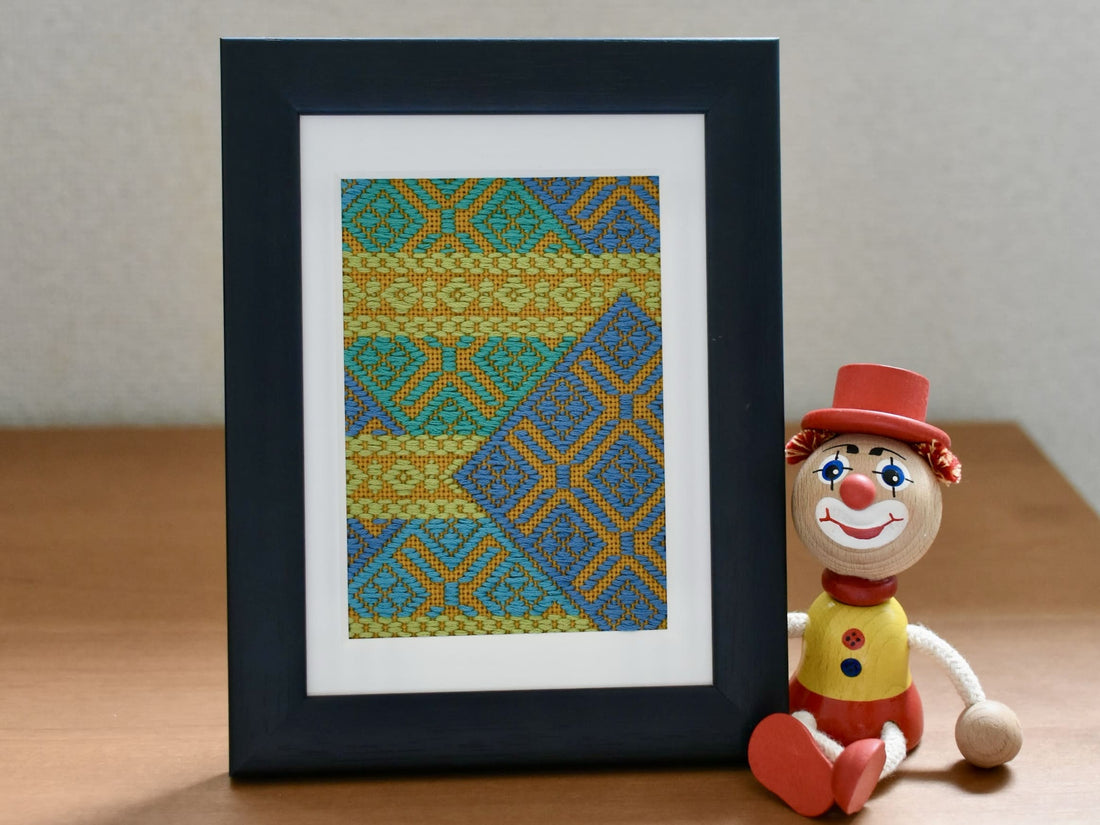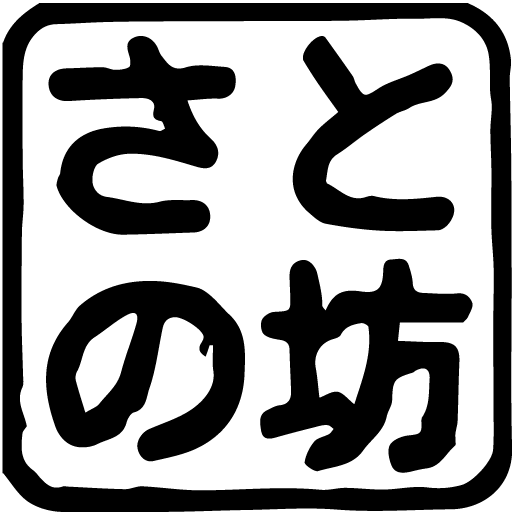
Enjoying Kogin sashimi patterns 2
◆Enjoy it in your own way Enjoying the Kogin-zashi pattern from the other day's blog In 1 , let's enjoy Kogin-zashi! I hope I was able to convey that. If you make a mistake and want to keep going, do so, if you want to fix it, fix it, if you want to draw the design first, write it, if you don't want to write it, don't write it. It's up to each person what method is fun, and I think it's best to enjoy it in a way that allows you to relax and enjoy it without feeling cramped.
If you are a beginner and don't know right from left, what would you say if you were told to draw a design and then do Koginzashi? Some people may have this in their heads that translates to ``You can't do koginzashi unless you draw a design.'' That's not true, is it? Once upon a time, when a mother taught her daughter how to make kogin-zashi, did she always draw a pattern?
If you already have a pattern from a book or kit, I think it would be a good idea to look at it and sew it. If you can better understand the design by drawing it out, I think it would be a good idea to write it out and then embroidery. Let's have fun and go? Whichever method you choose, it's Kogin-zashi!

(This piece was made with Olimpus Kogin thread and the colors were chosen with the image of Japanese bamboo in mind.)
◆Encounter lots of “fun”
The photos in this article and the works in the photo above were created around the time I restarted Kogin-zashi (when I stopped following the example). I found patterns I wanted to embroider in pattern books and koginbank's online Modco DB, and enjoyed creating them as works of art. At that time, I somehow felt that the traditional patterns that were placed next to each other resonated with each other, and I think that experience became the basis for creating the works for the recent Japan Folk Crafts Museum exhibition. What exactly is the traditional pattern of Kogin-zashi? amazing! This feeling continues to draw me to traditional patterns.

(The work is focused on adjoining each other, and the thread is Echizenya's embroidery thread Matalbon.)
◆The charm and power of traditional patterns
If you look at modoko (the basic pattern of kogin zashi), they are generally diamond-shaped, and they can be placed next to each other or combined. As I stab various types, I develop a sect-like feeling, such as, ``This smells the same as this one,'' but when I place the patterns selected within that group next to each other, First of all, I have the impression that it definitely feels good. However, even if you put modokos from different sects next to each other, you will be blessed with the opportunity to see the true potential of modokos and think, ``Oh? Is this what you came here? This might be good.'' I personally feel that the flexibility to embrace the individuality that overflows from each Modoko, or rather the ability to accept others , is what makes us able to call ourselves Modoko. This sentence may not convey my thoughts at all because it is just my imagination, but I feel that there is something like the soul-like core of traditional patterns, and I am captivated by them. I think this element is possible because of the pattern, which has become rounded over time (Modoko is quite sharp (lol)).
I sometimes hope that if I continue to create works centered around this traditional pattern, I will be able to discover even more important things for myself.

◆Flexibility of traditional patterns The photo above is a zoomed-in version of the work exhibited at the Japan Folk Crafts Museum (exhibited by koginbank, where the kogin embroidery was done by Satonobo). There are several large diamond shapes surrounded by an improvised pattern. You can see that the parts where the song can no longer proceed with the same rhythm change the rhythm and close with a certain Koginzashi-like feel (sorry for the feeling) . If it was me before, if things got out of order , I might just pull out the threads and straighten them out! That's what I thought, but once you get the experience of ``arranging everything to the best of your ability,'' when you get close to closing, it feels like you're playing a game, and it becomes fun . Rather than aiming for 100 points and reaching the goal, it's more like continuing to advance to the next stage while getting 70 points, and instead of experiencing 100 points, you experience many stages and finally reach the goal.
I think whether you find this game fun or not depends on your aesthetics and personality, so I don't think it's a game that everyone will want to try, but I'd appreciate it if you found it interesting. I hope you enjoy it. Even if you enjoy it just once, I think you will feel the expansion of Koginzashi. I hope someday I can create a kit that allows me to enjoy this random experience .
◆Thank you for your continued support in 2023. Thank you for your continued support in 2023. In addition to minne, we have also opened a shop on the Satonobou homepage, which has been used by many people. We were also blessed with the opportunity to have our kits handled by Tsugaru Kobosha and Koginbank, allowing even more people to enjoy them. It was always a special time to enjoy Kogin-zashi while talking directly with others, such as workshops at the handmade shop Niddy Noddy in Gumyoji Temple and lectures at Asahi Culture School.
This year, my activities were unstable due to production work and moving overseas, but everyone was really kind and always had kind words to say to me, so I was able to get involved with Koginzashi with a positive feeling. I am always grateful for the connections I have made through Koginzashi. I would like to continue to give back in whatever way I can.
I am planning to return to Japan temporarily around summer next year, and I hope to be able to sell kits during that period. We are preparing to introduce new book cover kits. Also, it looks like material research, which has stopped updating, will finally be able to resume. I don't know what the future holds yet (lol), but I will continue to act with this mindset in mind.  (Kogin reopened for the first time in three months after shipping arrived, and both were created in preparation for large-scale works.)
(Kogin reopened for the first time in three months after shipping arrived, and both were created in preparation for large-scale works.)
Have a happy new year for your mind and body.
▶️Materials research blog (scheduled to restart in the new year)
▶️Shop (scheduled to be open for a limited time when you return to Japan temporarily next year)
▶️Instagram (We show you the simplicity of Koginzashi through videos etc.)
Satonobou
